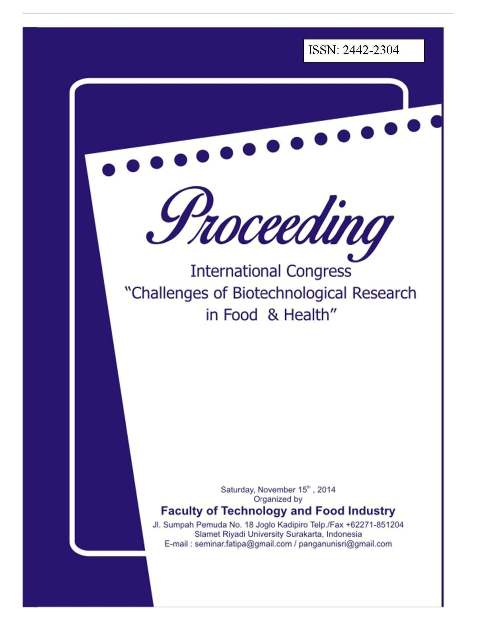TOTAL PHENOLIC CONTENTS AND ANTIOXIDANT ACTIVITIES OF TEN SOYBEAN PROMISING LINES TOLERANT TO ACID SOIL
Abstract
Marginal land such as acid soil has been recently used to cultivate soybean since soybean cultivated areain Java has shifted to other valuable crops. This expansion aims to fulfill national soybean demand and to
reduce soybean import as well as to ensure soybean security. Ten soybean promising lines tolerant to acid
soil have been bred to address this issue. Secondary metabolites in soybean, i.e. phenolic compounds vary
in each genotype. These compounds function mainly as chemical defense against insects and pathogens.
Also, the phenolic compounds including flavonoids which hypothetically have antioxidant activities have
positive effects to human health. Phenolic contents of ten soybean promising lines ranged from 2.87 to
3.73 mg GAE/g. Five varieties, i.e. Wilis, Tanggamus, Anjasmoro, Grobogan, and Argomulyo as the checks
had the phenolic contents of 3.02 to 3.93 mg GAE/g. Flavonoid contents of the ten lines varied from 0.57
to 0.76 mg CAE/g. There were no check varieties which had the flavonoid contents higher than those of
the promising lines. The Tgm/Anjâ€784, Tgm/Anjâ€856, Tgm/Anjâ€844, and Tgm/Anjâ€857 had the equally
high flavonoid contents, i.e. 0.76, 0.75, 0.72, and 0.72 mg CAE/g, respectively. Antioxidant activities as indicated
by DPPH values of the ten soybean lines were lower than those of Wilis, Argomulyo, and
Grobogan.
Keywords: soybean promising line, acid soil, phenolic content, flavonoid content, antioxidant activity.
Downloads
Published
2015-04-01
Issue
Section
Artikel

